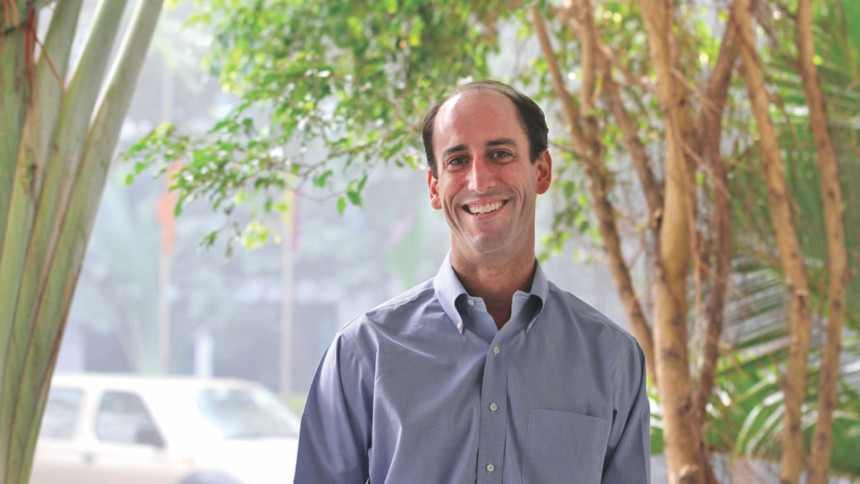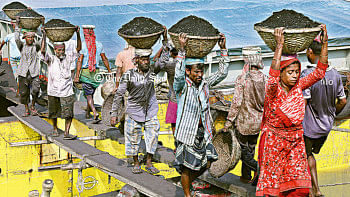“I was shocked by the number of people dying on the nation's roads.”

What was the background under which you established TraumaLink in Bangladesh?
My father was killed in a car crash about five years ago, and I care for many people who have suffered road traffic injuries through my work as an emergency room doctor. When I first came to Bangladesh in 2013, I was shocked by the number of people dying on the country's roads and all the more distressed to find out that there were no emergency medical services available for these victims at the crash scene. However, we also found that when a crash occurs in Bangladesh there are almost always people at the scene trying to help. Unfortunately, without proper training or equipment these efforts may not always improve patient outcomes and can sometimes cause harm. We felt that if we could harness this goodwill by providing guidance, education, and first aid supplies through TraumaLink, then we could really start making a difference in the lives of these injured patients.
I was fortunate to be travelling with two students who were also interested in road safety and we began a conversation about addressing this problem in Bangladesh with Mridul Chowdhury, CEO of mPower Social Enterprises. As we began investigating, the best way to do this, we brought other organisations into these conversations as well. Early on these included the South Asian Youth Society, Independent University of Bangladesh, Jagoree, and the Centre for the Rehabilitation of the Paralysed. Based on these discussions we created the TraumaLink.
Please tell us how Traumalink works.
We have created an emergency hotline number and a call centre that is available 24 hours a day, seven days a week. When a victim or bystander calls from the crash scene, the operator first collects information on where the crash occurred and how many people have been injured. As soon as this information is entered into our call centre software, the computer automatically generates SMS messages to volunteers prioritised by how close they are to the crash scene.
We recently completed our six-month pilot study in Daudkandi, on a 15 km stretch of the Dhaka-Chittagong highway where we responded to 88 crashes and treated 109 injured patients. Comparing our records to police records, we found that we have been called for every incident that would require a volunteer response. In the vast majority of cases, our volunteers arrived at the crash scene in five minutes or less.
What are the challenges you are facing?
We are facing a growing number of people dying on the roads as the country becomes more affluent and the number of road users and need for transportation increases. We are therefore working hard to balance our desire to provide high quality patient care against the need to expand these desperately needed services as quickly as possible.
Because our volunteers are working on the major highways where more injuries are occurring, we also worry considerably about transportation blockades and violence on the roads. Thankfully, none of our volunteers have been harmed in the course of their duties. I believe that having the community so strongly behind us has helped to provide them with protection, and we are extremely grateful for that.
What kind of support do you need?
Because this is a problem that affects all Bangladeshis, we need broad support from the government, private sector, and most importantly the communities we serve. We need people to trust us enough to call our hotline number and use our services. We have been honoured and humbled by the outpouring of support we have received thus far, and continuing to earn that trust is something we take very seriously. In order to continue providing free high quality services to our patients, we will also need ongoing financial support for our activities. We plan to expand first along the highways and then on a national scale, so that the country finally has a robust and self-sustaining pre-hospital emergency medical system. We have also formed a broad network of partners working in road safety and hope to use this as a strong and unified front for education, advocacy, and creating positive policy changes.
Although we started our service with a regular phone number, we have been advocating strongly for a short code hotline number from the BTRC. We feel like this is crucial, especially as we move up to a national scale, because people need a number that is easy to remember in a time of crisis.
[An attending emergency physician at Massachusetts General Hospital in Boston, Massachusetts, USA, Dr. Moussally received his Master of Public Health degree from the Harvard School of Public Health. He has over a decade of experience teaching acute emergency medical care in the US and abroad.]


 For all latest news, follow The Daily Star's Google News channel.
For all latest news, follow The Daily Star's Google News channel. 



Comments